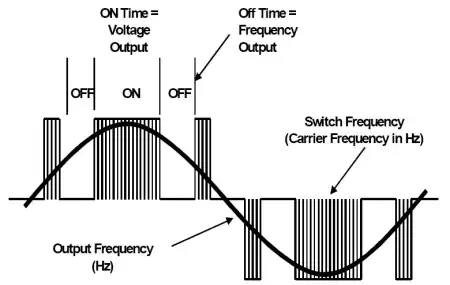Im using an inverter to convert Dc into Ac from battery. I want to control the frequency of the alternating current ie., increase and decrease gradually (eg: 1Hz 2Hz 3Hz... 60 Hz). Is it possible to control the frequency?
-
1Does change in frequency affect the power supply (current intensity) of battery? – Manikandan Balasubramanian Jan 07 '15 at 13:35
-
2An inverter will have some sort of oscillator...you can simply change the frequency of oscillation. – Mr. Mascaro Jan 07 '15 at 13:43
-
1Yes, you can change the oscillator frequency. But be aware that the transformer and other components are apt to be "tuned" to the specific design frequency of the supply, so varying more than maybe 5-10 Hz (relative to 50-60 cycles) may cause overheating and other issues. Also, if the supply provides "true sine wave" power via "chopping", altering the frequency (even by 1Hz) could cause serious distortion of the waveform. – Hot Licks Jan 07 '15 at 23:01
-
(But it sounds like what you really want is what used to be (40 years ago) called a "servo amp" -- basically a humongous audio amplifier, capable of very low frequency operation.) – Hot Licks Jan 07 '15 at 23:04
4 Answers
Maybe consider a single-phase motor speed controller like this one. According to the spec it runs from 48Hz to 62Hz and can produce an output frequency of 0 to 120Hz with 0.1Hz resolution. Output power is about 1 h.p.
There will be many options and alternatives in this type of product - this was top of the list on google when searching for "single-phase motor speed controller".
- 456,226
- 28
- 367
- 807
-
A high power audio amplifier may also work, depending on what exactly he needs a variable frequency AC supply for. – Adam Davis Jan 07 '15 at 16:55
An inverter designed to produce AC power is almost always designed for a particular frequency, 50 or 60 Hz. They typically contain a transformer to assist with the voltage conversion, and that transformer will be very inefficient at any frequency below the design frequency.
If you need high-powered AC signals at 1 Hz, 2 Hz, etc., you'll need to use a completely different approach.
- 172,781
- 17
- 234
- 402
-
1Ok.. Can I control the Frequency above the design frequency?? Is it possible to control the frequency first? – Manikandan Balasubramanian Jan 07 '15 at 13:56
-
2To a point. The transformer is probably built with a laminated iron core, so eddy currents will become more of a problem as the frequency increases. – Dave Tweed Jan 07 '15 at 13:58
As the other two answers suggest (and Javi does a very good job explaining the output), you could go to any industrial electric supply place and get a Variable Frequency Drive (VFD). Most are three-phase, but you can get single-phase also.
A VFD works by rectifying the incoming AC directly (no transformer or anything) into high-voltage DC, then chopping up that DC to approximate a sinewave for each phase out. The internal control circuitry is also powered from the high-voltage DC via an internal DC-DC supply.
So, if you have a high-voltage DC supply already, you could connect it directly to the terminals on the drive labelled DC and leave the AC disconnected, or you could give it AC from a sinewave inverter (less efficient, must be sinewave because of the peak voltage). Then if you want a true sinewave out (most motors don't care), you'll need to add an LC filter after the drive. Go to the same electric supply and look at load reactors for the L and power factor correction capacitors for the C.
In all of this, remember: NO TOUCHY!!! :-)
Or, as Adam Davis suggested, you could use an audio amp.
- 5,666
- 11
- 37
VFD's (Variable frequency drives, also known as variable speed drives) are extensively used in industry to control AC motors. They use a rectifier to convert incoming three phase AC to DC, then use six IGBT's (isolated gate bipolar transistors) to pulse on and off to simulate the AC output to the three phase motor:

Wikipedia will explain a lot better: VFD's
- 11
- 1